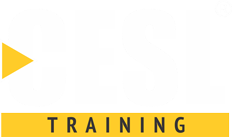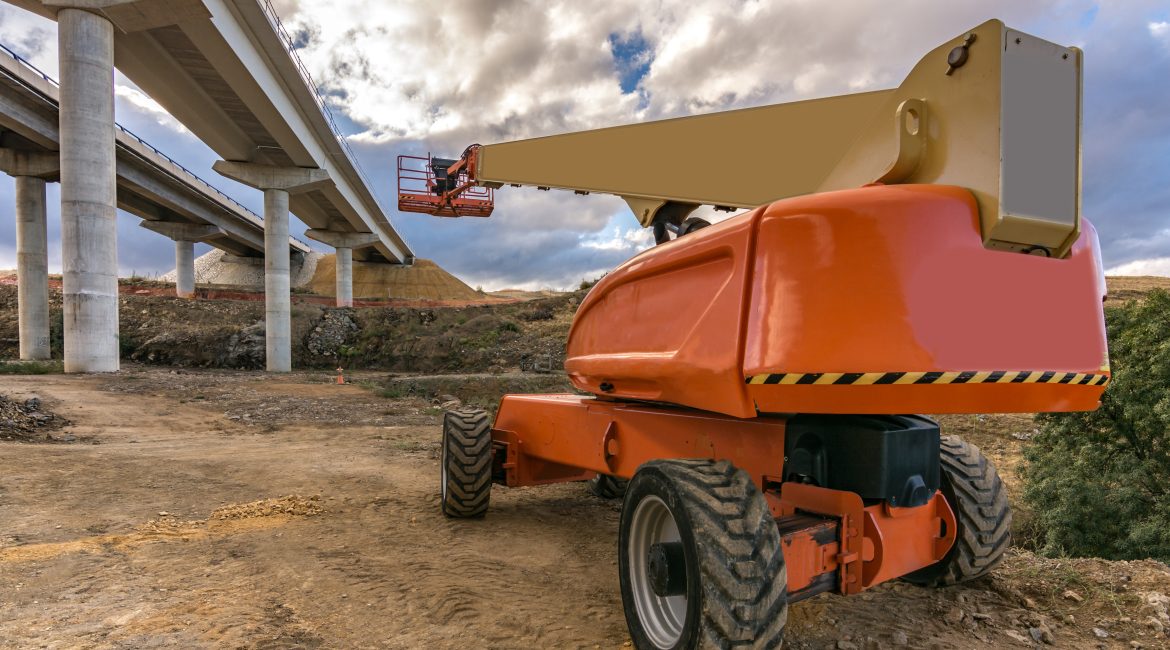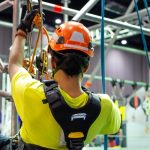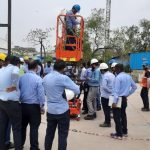MEWP training is one of the most effective ways to improve safety on highway construction projects, which are among the most hazardous environments in the infrastructure industry. With constant exposure to moving traffic and elevated tasks, workers face multiple risks daily. While Mobile Elevating Work Platforms (MEWPs) help mitigate many of these dangers, proper operator training is essential to ensure safety, regulatory compliance, and smooth project execution.
This blog explores the key hazards on highway sites and the importance of MEWP training certification for safe and efficient project execution.

Identifying Common Site Hazards in Highway Construction
Highway construction sites present a unique combination of risks that demand rigorous safety protocols and trained personnel. Some of the most common hazards include:
-
- Falling Objects: Tools, materials, and debris falling from height pose a significant risk. This can occur during the handling of materials or while performing tasks from elevated positions.
-
- Fall Hazards: Workers operating at height face the risk of falling, which is a leading cause of injury in construction. This risk is compounded by unstable surfaces, unguarded edges, and inadequate fall protection.
-
- Electrical Hazards: High-voltage power lines and electrical installations are common on highway projects. Workers must navigate these hazards carefully to avoid electrocution or equipment damage.
-
- Traffic Risks: Construction sites near active roadways present risks from moving vehicles. Proper signage, barriers, and traffic management are essential to protect workers from vehicular accidents.
-
- Environmental Factors: Weather conditions, such as high winds and heavy rain, can affect the stability and safety of work platforms and increase the risk of accidents.

The Role of MEWPs in Addressing Site Hazards
Mobile Elevated Work Platform training are designed to enhance safety and efficiency in height-related tasks by providing a stable and secure working platform. Here’s how MEWPs help address common site hazards:
-
- Improved Access: MEWPs enable workers to reach high or difficult-to-access areas safely. This reduces the need for ladders and scaffolding, which can be less stable and more prone to accidents.
-
- Fall Protection: Features like non-slip platforms, safety harness points, and guardrails reduce the risk of falls significantly when used properly—something emphasized in every MEWP operator training course.
-
- Enhanced Stability: MEWPs come with automatic leveling systems and stabilizers to ensure that the platform remains stable even on uneven or sloped surfaces. This stability is crucial for maintaining safety during operations.
-
- Efficient Material Handling: MEWPs can be used to lift materials and tools to elevated work areas, reducing the need for manual lifting and minimizing the risk of dropping objects.
-
- Versatility and Mobility: MEWPs can be easily moved and repositioned, allowing workers to access different areas of the construction site efficiently. This mobility helps in managing site hazards and adapting to changing conditions.
The Importance of Comprehensive MEWP Operator Training
While MEWPs enhance safety, their effectiveness depends entirely on the MEWP certification of those operating them. Here’s what proper training includes:
-
- Understanding Equipment: Operators need to be familiar with the various types of MEWPs, their functions, and their specific safety features. MEWP Online Training should cover how to operate different models and handle various scenarios.
-
- Safety Protocols: MEWP operator certification training program should emphasize safety protocols, including the use of personal protective equipment (PPE), fall protection systems, and emergency procedures. Workers must understand how to use these systems correctly to ensure their safety.
-
- Site Hazard Awareness: Operators should be trained to identify and assess site hazards that could affect MEWP operations. MEWP course includes understanding how environmental factors, such as wind and weather conditions, can impact equipment stability and safety.
-
- Emergency Response: Training should include emergency response procedures for dealing with incidents such as equipment malfunctions, falls, or severe weather. Operators should know how to respond quickly and effectively in emergencies to minimize risks.
- Regulatory Compliance: Ensuring that training meets industry regulations and standards is crucial. Compliance with safety regulations not only protects workers but also helps avoid legal and financial repercussions for the company.

Case Studies: Training Impact on Safety
Case Study 1: Bridge Repair Project
On a recent highway bridge repair project, workers with MEWP training certification demonstrated excellent operational control. With fewer safety incidents and improved task efficiency, the project finished ahead of schedule.
Case Study 2: Highway Sign Installation
For a major highway sign installation project, thorough Online MEWP training enabled workers to manage the risks associated with working at height and near traffic. Proper training ensured that MEWPs were used safely, reducing the risk of accidents and ensuring timely completion of the installation.
Case MEWP Training Options for Highway Construction Teams
Construction companies have access to various training modes:
MEWP training online: Ideal for theory and certification renewal.
In-person MEWP operator training: Best for hands-on practice.
Blended MEWP training courses: A combination of online modules and practical sessions.
Whether you choose an on-site or online MEWP training option, make sure the course provider is accredited and offers official MEWP certification upon completion.
Conclusion
Highway construction environments demand the highest safety standards. While MEWPs are invaluable in managing tasks at height, their safe use hinges on proper training. By investing in certified MEWP operator training courses, companies can drastically reduce site hazards, ensure compliance, and boost project efficiency.
Get MEWP certified today and elevate safety on your highway construction projects.




